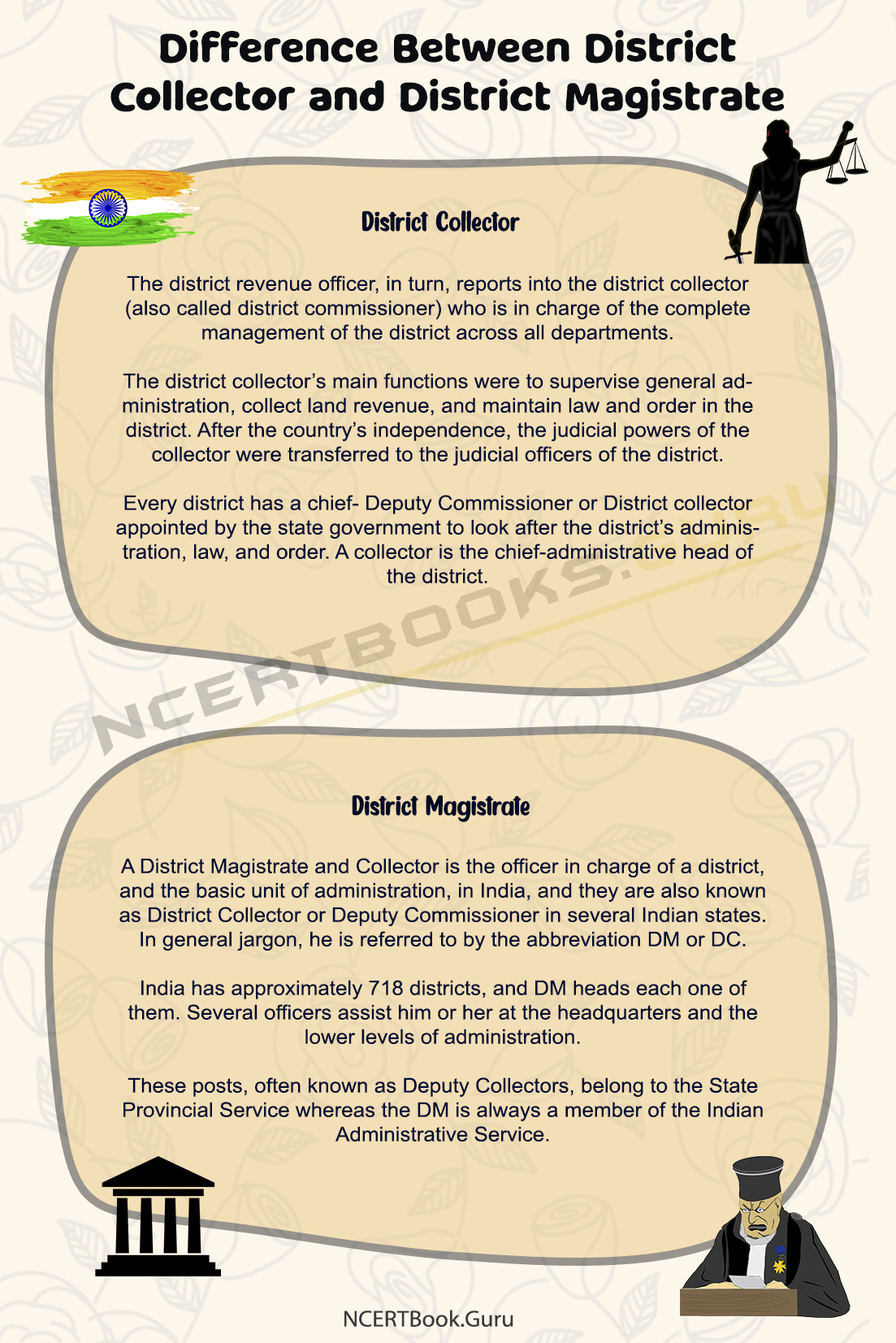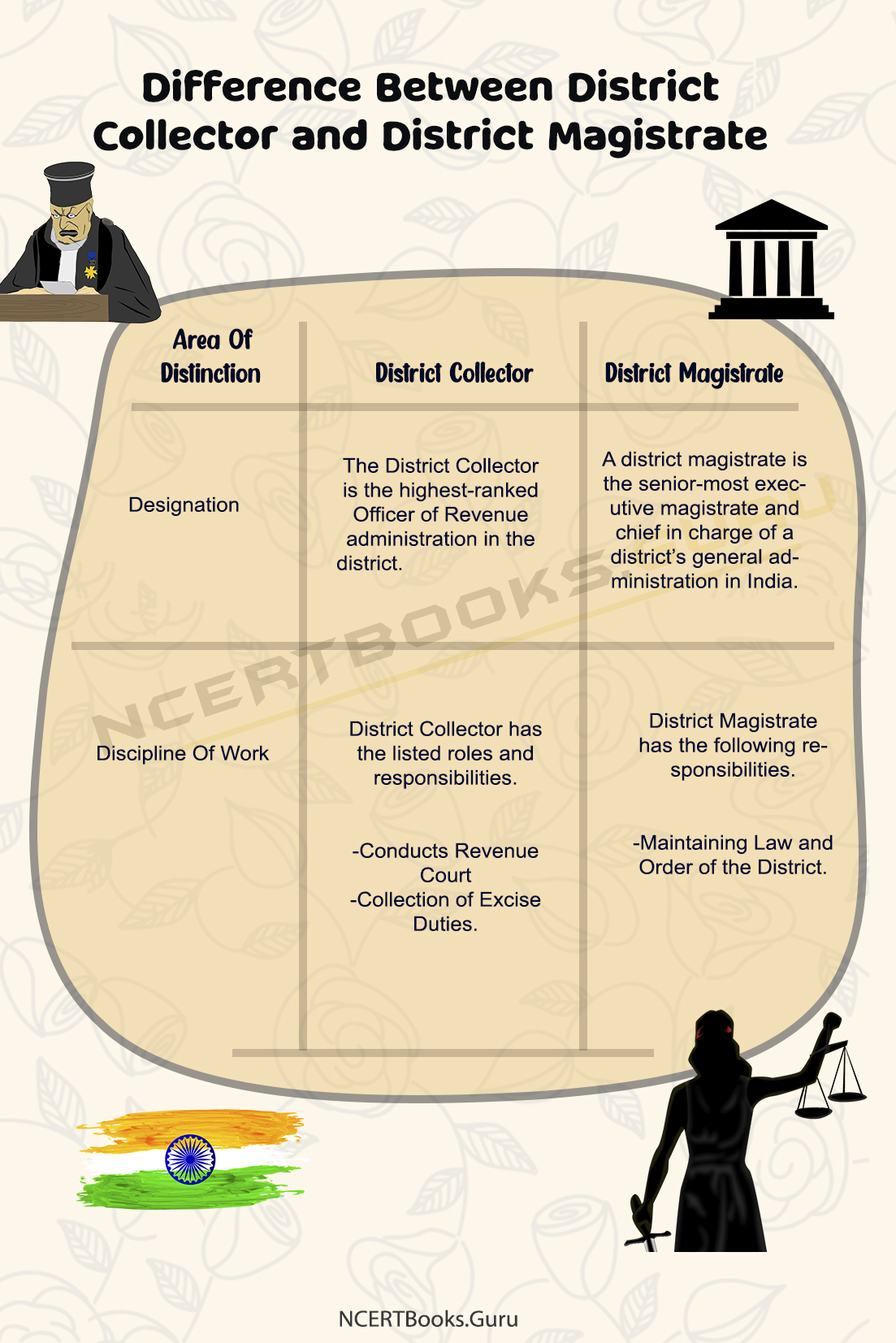Introduction
The District Collector is the highest-ranked Officer of Revenue administration in the district. In revenue matters, he/she is assigned to the Government through the Divisional Commissioner as well as the Financial Commissioner (Revenue).
A district magistrate, is often abbreviated to be DM, is an Indian Administrative Service (IAS) officer who is also the senior-most executive magistrate and chief in charge of a district’s general administration in India.
You can also find differences between articles on various topics that you need to know. Just tap on the quick link available and get to know the basic differences between them.
What is the Difference Between District Collector and District Magistrate?
District Collector
The district revenue officer, in turn, reports into the district collector (also called district commissioner) who is in charge of the complete management of the district across all departments.
The district collector’s main functions were to supervise general administration, collect land revenue, and maintain law and order in the district. After the country’s independence, the judicial powers of the collector were transferred to the judicial officers of the district.
Every district has a chief- Deputy Commissioner or District collector appointed by the state government to look after the district’s administration, law, and order. A collector is the chief-administrative head of the district.
District Magistrate
A District Magistrate and Collector is the officer in charge of a district, and the basic unit of administration, in India, and they are also known as District Collector or Deputy Commissioner in several Indian states. In general jargon, he is referred to by the abbreviation DM or DC.
India has approximately 718 districts, and DM heads each one of them. Several officers assist him or her at the headquarters and the lower levels of administration.
These posts, often known as Deputy Collectors, belong to the State Provincial Service whereas the DM is always a member of the Indian Administrative Service.

Difference Between District Collector and District Magistrate
| Area Of Distinction | District Collector | District Magistrate |
| Designation | The District Collector is the highest-ranked Officer of Revenue administration in the district. | A district magistrate is the senior-most executive magistrate and chief in charge of a district’s general administration in India. |
| Discipline Of Work | District Collector has the listed roles and responsibilities.
|
District Magistrate has the following responsibilities.
|

Similarities Between District Collector And District Magistrate
- The DC/DM institution remained the same in both the countries till the 2001 Devolution of Powers Scheme.
- A DIG is at par with the commissioner, a rank superior to DM.
- Now DIGs will have to work under DMs who are junior to them.
- All IAS officers are taken into consideration as to be more powerful than IPS officers for certain reasons; hence they belong to the same institution.
Frequently Asked Questions on Difference Between District Collector And District Magistrate
Question
Who is bigger DC or DM?
Answer:
The District Collector is the highest-ranked Officer of Revenue administration in the district. A district magistrate, often abbreviated to DM, is an Indian Administrative Service (IAS) officer who is the senior-most executive magistrate and chief in charge of a district’s general administration in India.
Question
Are DM and DC the same?
Answer:
The institution of the DC/DM remained alike in both the countries till the 2001 Devolution of Powers Scheme.
